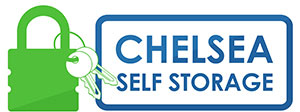Often, when people start to see their home start to ‘shrink’ because of the sheer number of items they are retaining around the house, they undertake a decluttering exercise – and this can be quite a daunting process! The main aspect to remember is to start with small steps and go about the exercise logically and methodically – here are some tips as to how to set about this reorganisation:
Containers
When you set about your decluttering exercise, make sure you are properly prepared for it – have containers or bags laid out for your different categories. As you work through your items decide which container/category they fall into – Keep, Fix or Mend, Recycle, Throw Away, or Donate!
When deciding what to do with each item use a couple of standard rules – the first being the 80/20 Rule – we use 20% of our belongings 80% of the time – so, either dispose of, or put into storage the other 80% of your items not regularly used!
The other rule is the 5 second rule – give yourself 5 seconds to remember the last time you used each item – if you can’t remember – get shut!
Create A Timeline
It is important to be realistic about your decluttering exercise – if you are going through your entire home then don’t try and do it all at once! Set aside realistic scheduled times to go through all your household items and declutter in an orderly and controlled exercise.
Room By Room
Your home offers you a natural format to set about your decluttering – take a room at a time and don’t move on to the next until one room is completely decluttered and reorganised.
- Bathroom –It is best to start with a small room or space, so the bathroom is ideal! Take each item from the medicine cabinet or cabinet drawers, do a quick evaluation of what you want to retain and replace them back in the place they should be stored. The other unwanted items should be discarded into the appropriate containers or bags you have set aside for the different categories. Take the opportunity for a quick clean of the shelving and cabinets before replacing the retained items.
- Bedrooms – Always a nice idea to make the bed before you start – it creates an orderly environment to work in and is relevant to the task ahead! Remove anything from bedside tables or nightstands and again decide item by item what you want to retain – if there are books there you have read or old mail items, pens, and paper etc. then this is the opportunity to throw them out or put the books into the donate container for charity shops or libraries. Repeat the process for any chests of drawers or vanity tables.
- Closets/Clothing – Obviously, as part of the bedroom decluttering, this is where you often discover the most items no longer used nor needed. It is best to sort by clothing type – start with shoes, boots, then move on to dresses, denim, suits where applicable, then shirts, skirts, trousers, and such. Once decided on what is to be kept and what is to be disposed, you should put away the items retained in the place where you want them stored going forward. Put any washing items into a laundry basket or similar, then any items you’ve put aside for repair should be kept separate. The clothing you have decided to part with should be bundled and taken to appropriate clothing recycling or perhaps charity outlets.
Kitchen
Kitchens are often cluttered – there are so many different individual items used in there! Be methodical about your sorting – cutlery items, crockery, pots and pans etc – decide what items are still useful and what you want to discard. Empty all the drawers and cabinets and perform the same sorting process. Once decided, clean down the shelving and drawers, and replace in an orderly fashion the kitchen items you are keeping.
Living Room
Again, lots of scope for excess items to gather over a period – apply the same sorting process and consider the furniture items, any electronic items, any kids toys lying about and make the keep or dispose decisions.
Dispose Of The Clutter
At this stage, you have definite containers of all the items you want to dispose with, so take them to the appropriate facilities – the local tip, recycling centres or charity establishments for the items you want to donate.
This process should have left you with a clutter-free and well-organised home – the trick then is to maintain it that way!
